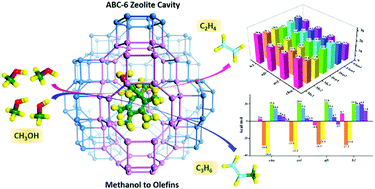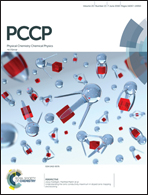Methanol-to-olefin conversion in ABC-6 zeolite cavities: unravelling the role of cavity shape and size from density functional theory calculations†
Abstract
We report a density functional theory (DFT) study to investigate methanol-to-olefin (MTO) conversion in four types of ABC-6 zeolite cavities (cha, avl, aft and h1) by varying their shape and size. Based on a side-chain alkylation mechanism, the reaction energies and barriers of methylations, deprotonations and eliminations for hydrocarbon pool (HP) intermediates are calculated. In the cha cavity, methylations and eliminations are found to possess low barriers as attributed to the strong confinement effect of the elliptical and small cha cavity. The avl and aft cavities also exhibit low barriers of the first and second methylations, and similar barriers of eliminations for producing olefins as in cha. Due to the narrow shape and large size of the h1 cavity, most of the reaction barriers in h1 are the highest. The stabilities of HP species and transition states in the four cavities are quantified by the Gibbs energy profiles. It is found that aft with a wide dimension is favorable for the stability, especially for the charged HP species. The DFT calculation results reveal that the activity and selectivity of MTO conversion in zeolite cavities are strongly governed by the confinement effect, which depends on cavity shape and size. We also predict that zeolites with aft cavities might have good performance for MTO conversion.



 Please wait while we load your content...
Please wait while we load your content...